I was introduced to the Tacoma Chinese Reconciliation Park this spring.
Since coming to Evergreen, I’ve had the delightful privilege of meeting and learning with two awesome faculty members, Pauline Yu and Steven Flusty (both Ph.D). My last class with Steven was a Student Originated Study called Fantastic Resistances, affectionately dubbed FanRez. We deconstructed nerd culture and popular media. We especially identified ways that art was used as a form of resistance. This theme became all too relevant at the park.
So here’s the story: Pauline and Steven are avid nerds who happened to have a cosplay gig while I was enrolled in the aforementioned class. They offhandedly mentioned going “truth-trolling” at a steampunk event, then stopping by the Reconciliation Park to take a few pictures. I happen to be a member of an emerging production company — and I found their project relevant to what I was learning — so I volunteered our services to do a full photoshoot for them. So that weekend, we went truth-trolling.
I can hear some of y’all now: What on earth is truth-trolling?
Well…

Taken at the Fuzhou Ting at the Tacoma Reconciliation Park. The pavilion (ting) was donated to Tacoma by the Chinese sister city of Fuzhou. It is the first Chinese structure standing in Tacoma.
Pauline was inspired by Kristina Wong, an Asian American performance artist whose artist statement provides a pretty succinct description of truth-trolling:
I believe that as an artist, my job is not to “fix” the wrongs of the world with easy answers, but instead, to further complicate the question by making the invisible—visible, and hopefully, creating some space for public discourse. I would describe my aesthetic at its best as subversive, humorous, and endearingly inappropriate.

Endearingly inappropriate!
As we know, Reconciliation Park was founded to heal the “moral wound” of Chinese exclusion and expulsion from Tacoma. Anti-Chinese sentiment was simmering for a few decades before the incident, but on November 3, 1885, a racist mob of (presumably white) citizens rounded up 200 Chinese citizens and forced them out of town. Since no Chinese blood was spilled, this method of expulsion, known as the Tacoma Method, became a model for nicer, politer anti-Chinese racism on the west coast.
Eventually, 27 people were tried for the Tacoma expulsion, but never convicted. (As a Black woman, that outcome sounds familiar.) In 1991, a citizen named Dr. Murdoch submitted the proposal to construct this park as a means of apology for the 1885 incident. Another reason cited was the potential for growing trade with China and hope for a flourishing future relationship. The city of Tacoma eventually paid nearly half a million dollars to the government of China as a measure of atonement. Which is cool, I guess. But there’s no easy way to know the fate of the actual Chinese families that were unreasonably exiled.
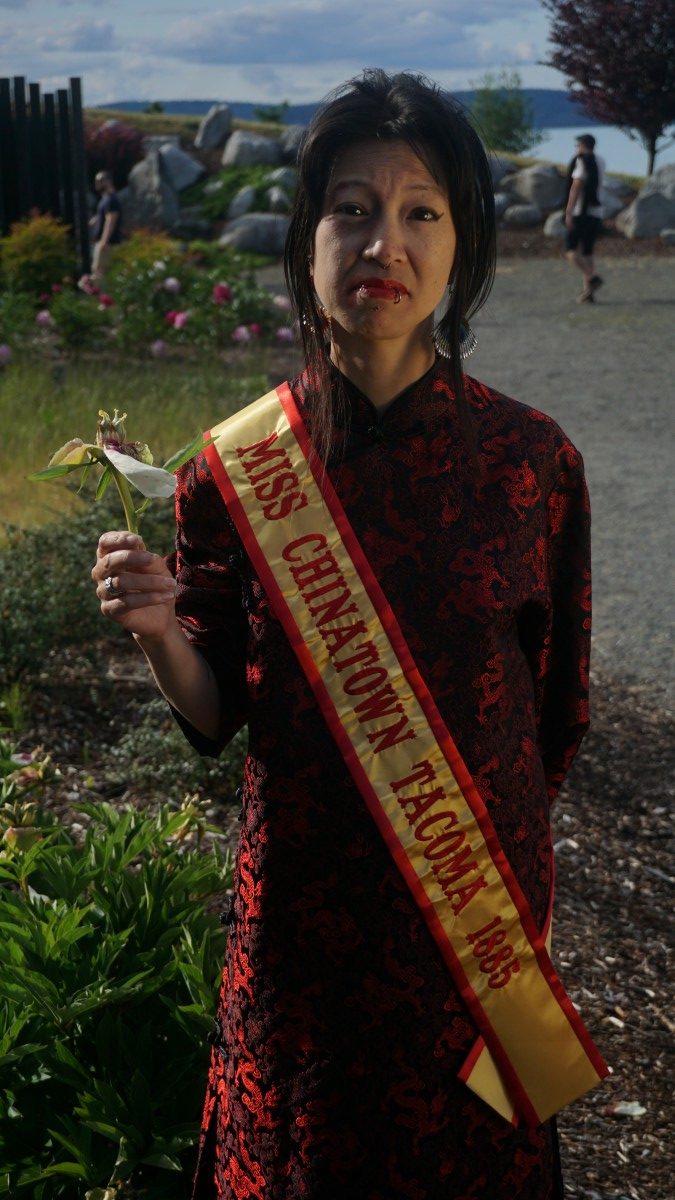
The park itself is a beautiful political gesture, a solemn reminder of the ugliness of systemic discrimination. I appreciate it on its own merit. But I will remember the monument (and its story) for Pauline’s art. The serene and reflective park on the waterfront tells the story of the exile, but it fails to capture the lived experience of the displaced people. I feel Pauline’s actions provided a different context to the space. Maybe too much for some: no one wanted to talk to us as we walked around. But we received so many confused glances! I was honestly surprised that no one approached us to ask any questions.
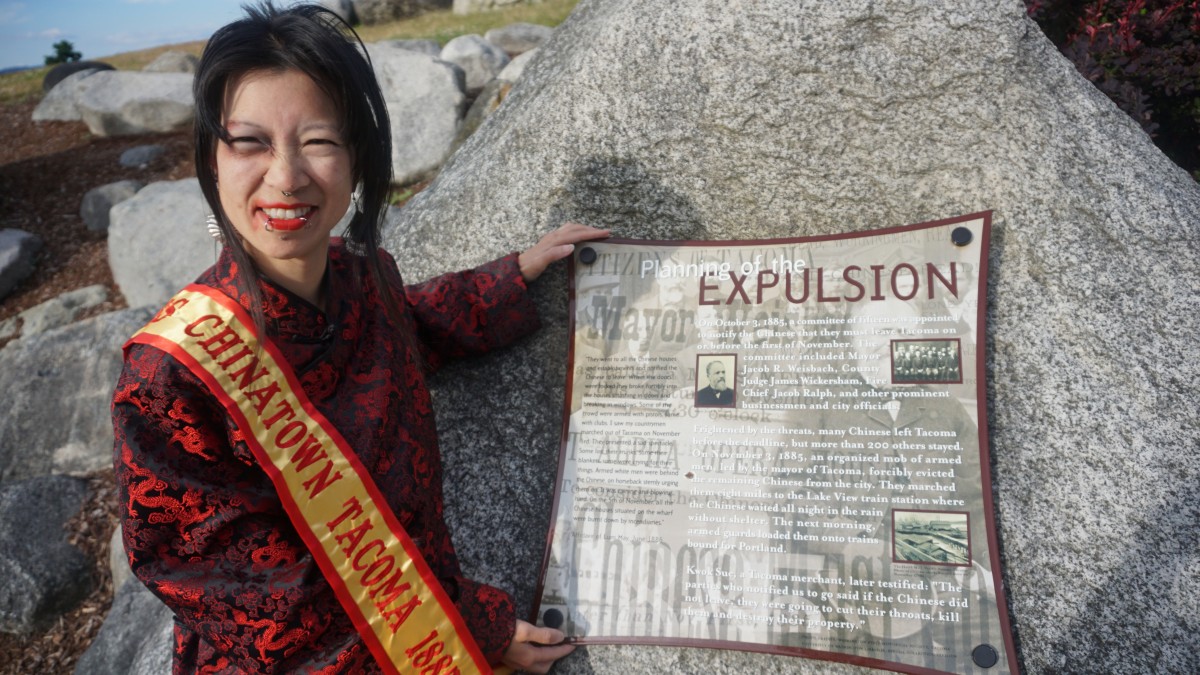
Despite the heavy overtones, the shoot was a lot of fun. I imagine I’ll be unpacking it for years.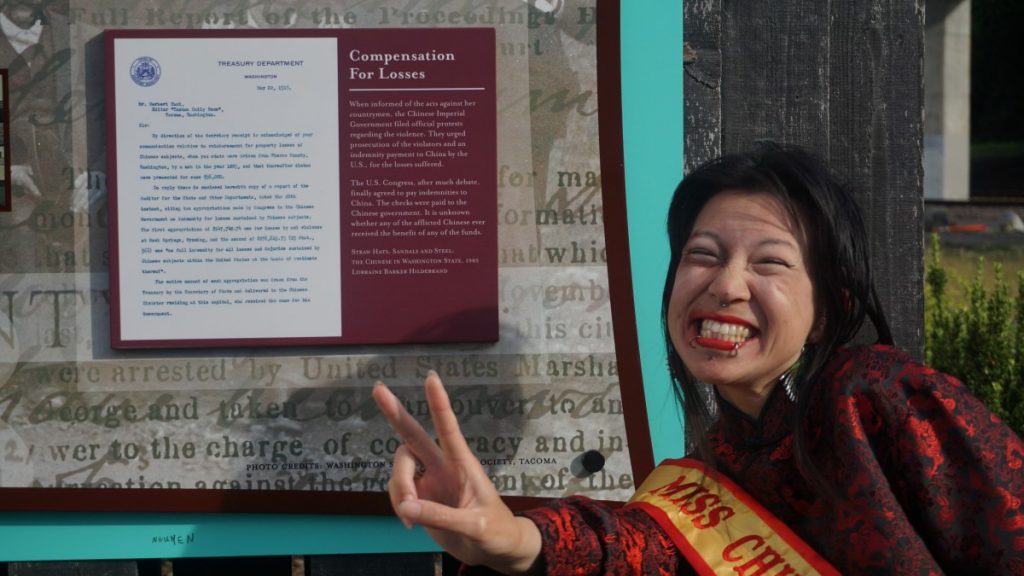
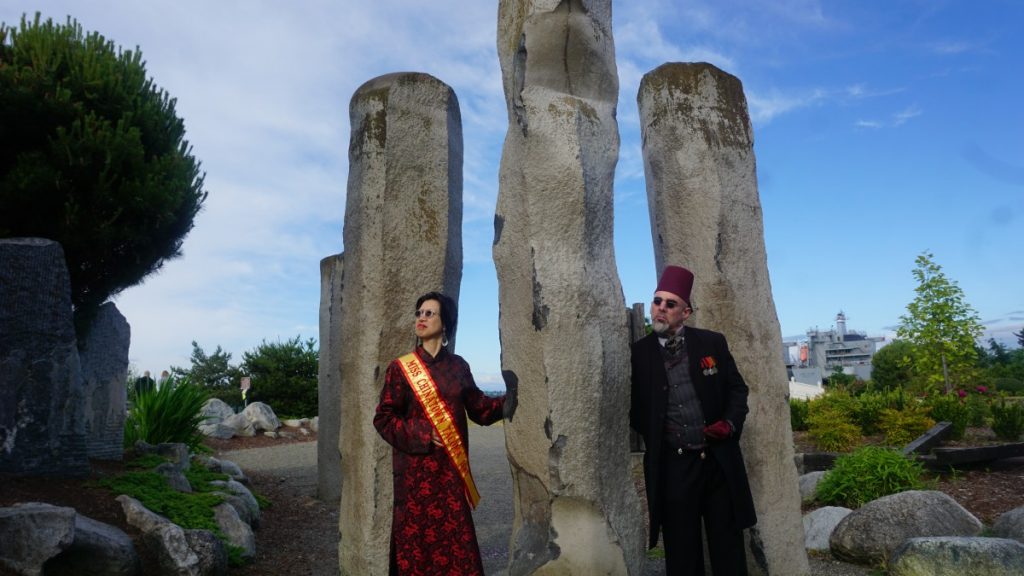
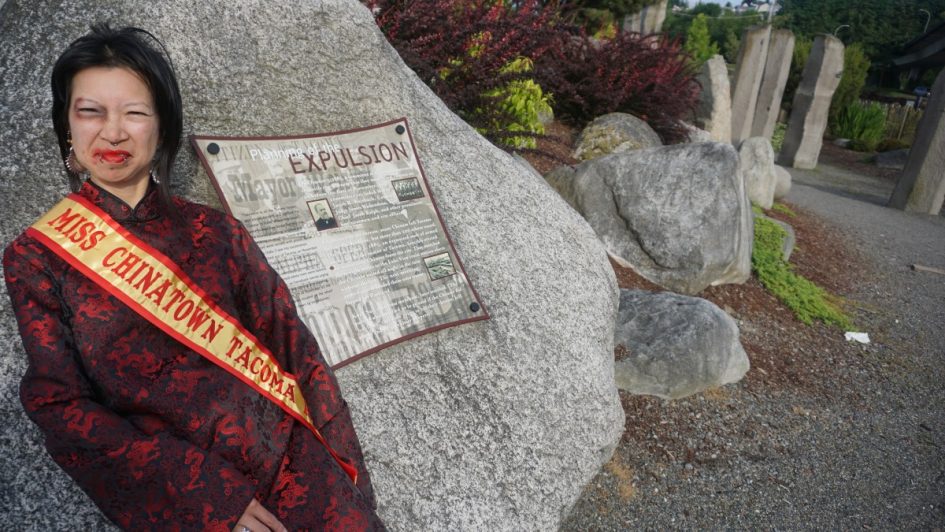
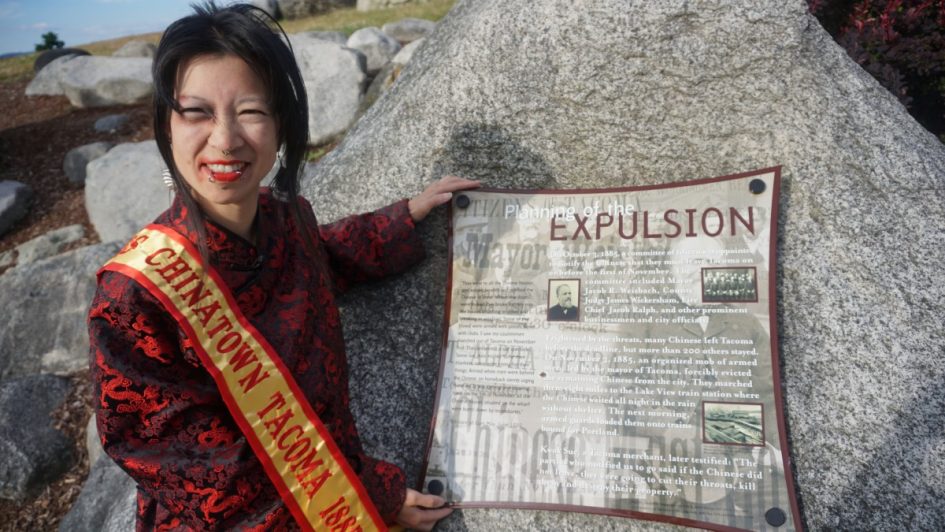

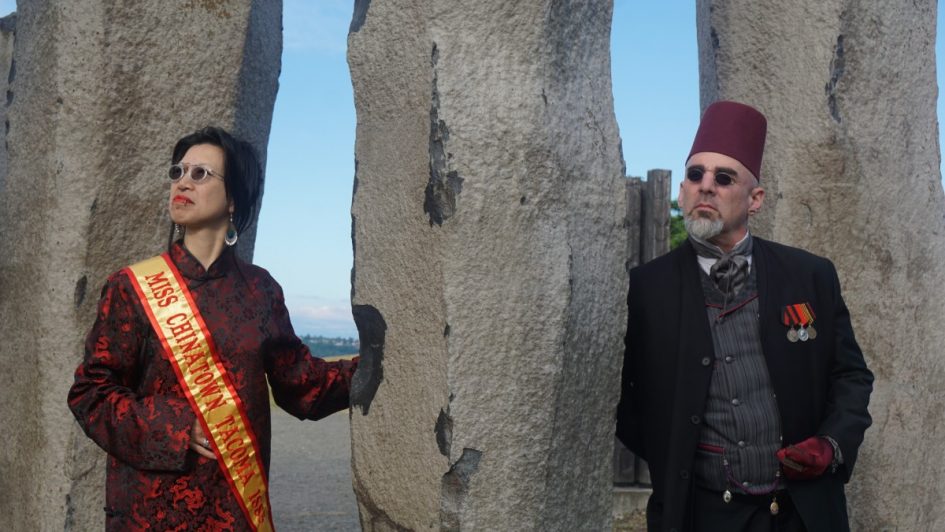
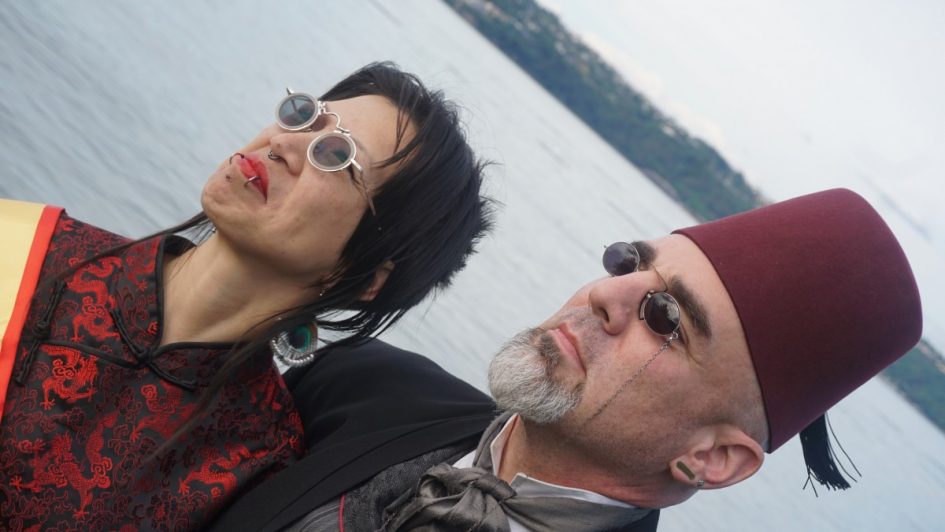
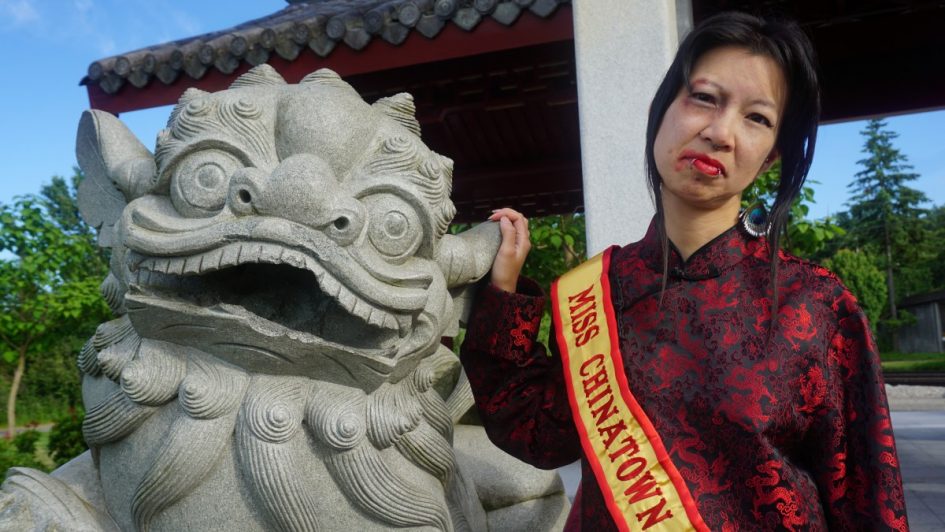
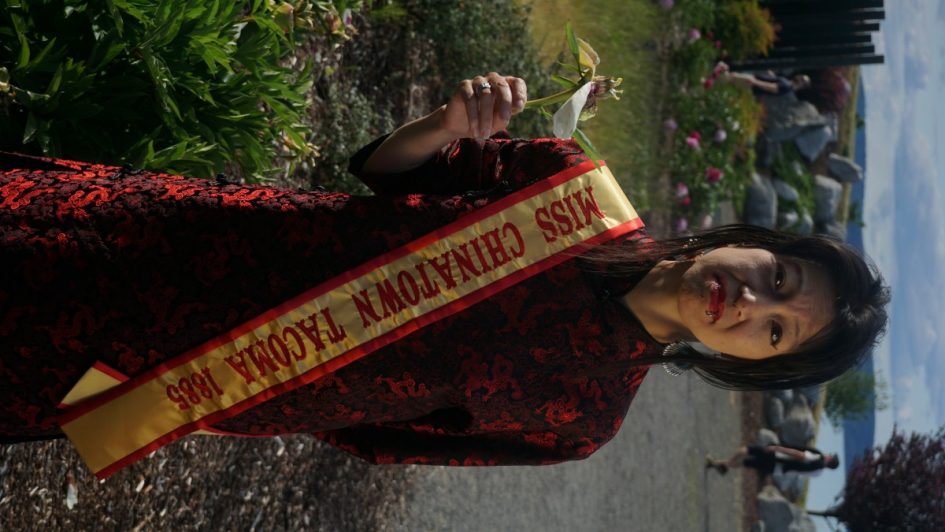
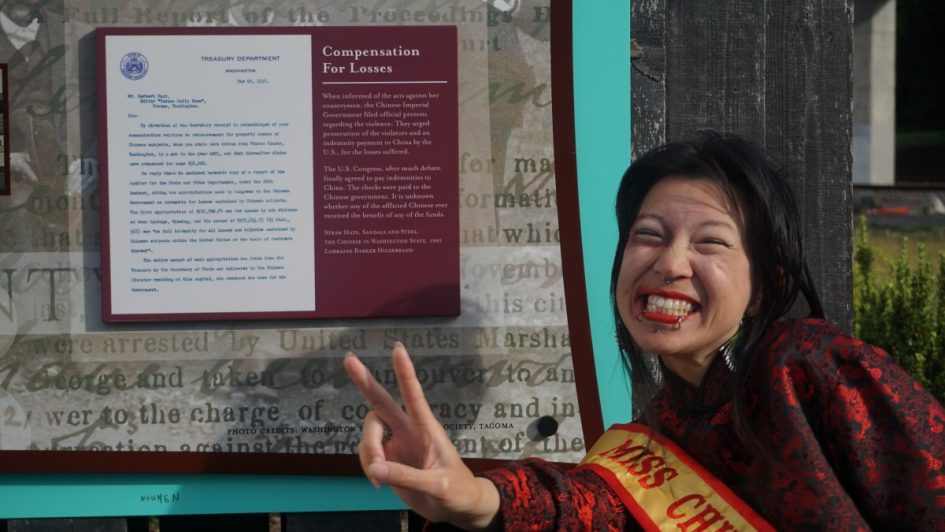
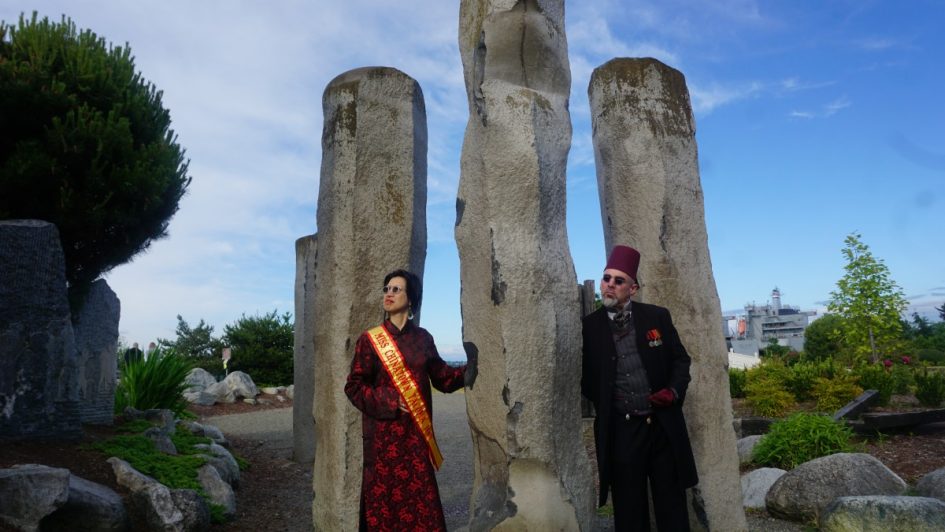

Leave a Reply
You must be logged in to post a comment.